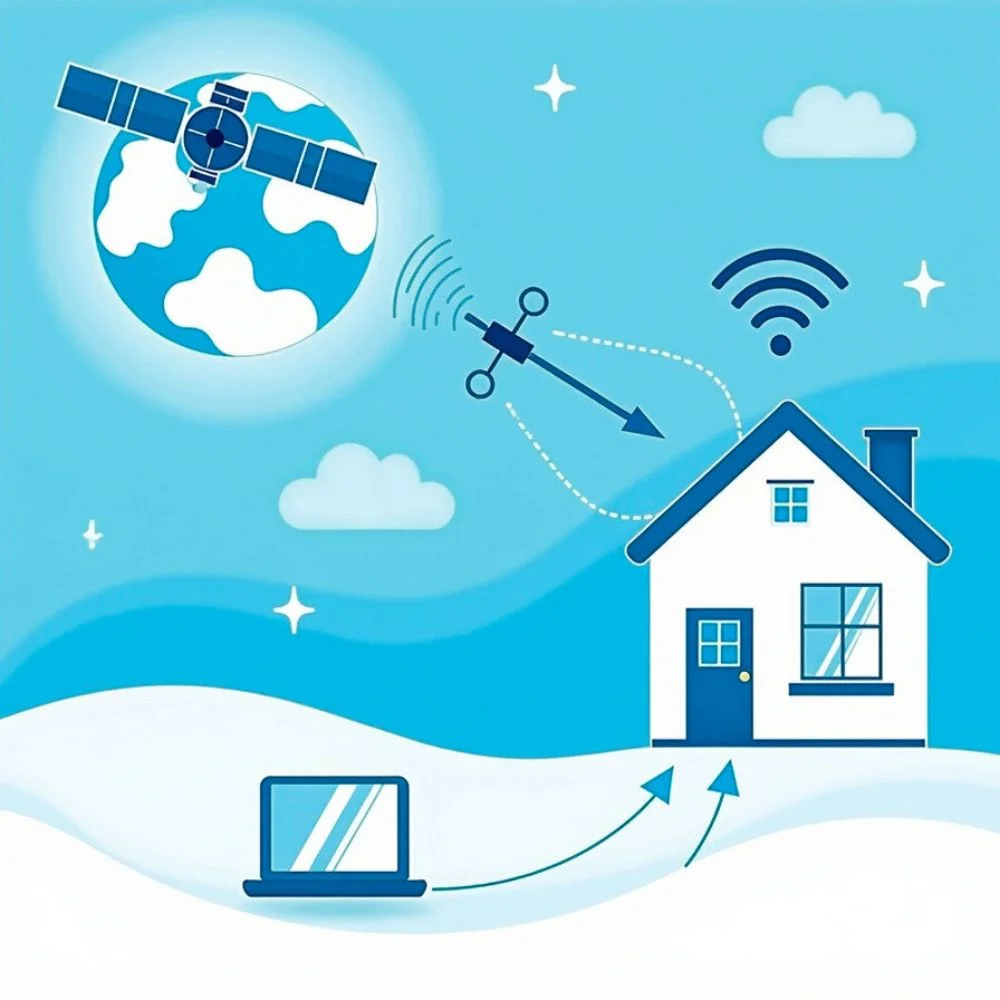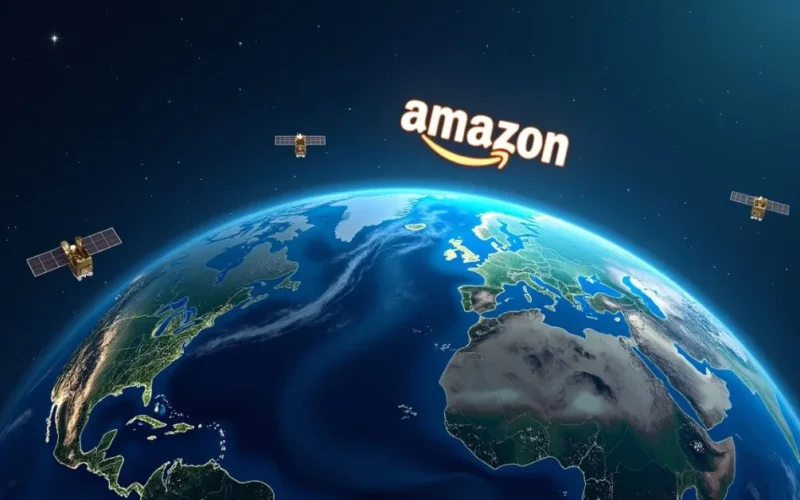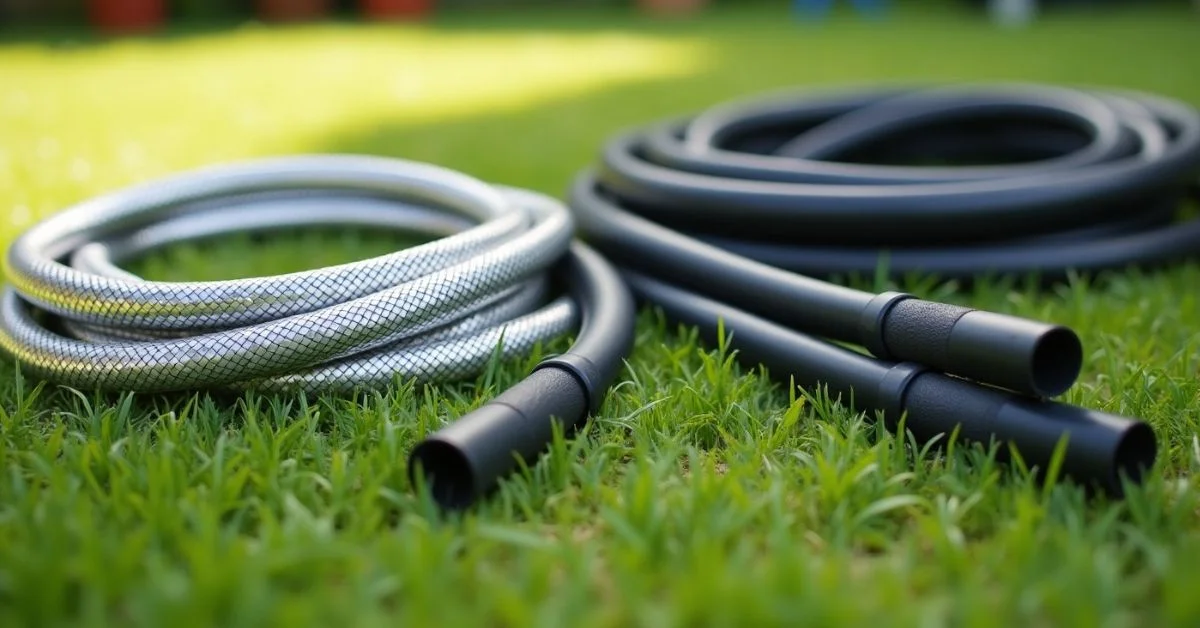Table of Contents
- What is Project Kuiper?
- Why is Amazon Doing This?
- The First Launch: KA‑01
- The Second Launch: KA‑02
- More Launches to Come
- How Does Satellite Internet Work?
- Who Will Benefit from Project Kuiper?
- What the Satellites Do Up There?
- How Does Project Kuiper Compare to Starlink?
- What the Future Could Look Like?
- Conclusion
In 2025, Amazon took a big step toward offering fast and reliable internet from space. They launched the first two groups of satellites for Project Kuiper, their plan to build a network of thousands of small satellites orbiting the Earth. The goal is to give real internet speeds to people in far-off places where regular internet doesn’t reach or is slow.
What is Project Kuiper?
Project Kuiper is a satellite internet system being developed by Amazon. The goal is simple but powerful: to provide fast, affordable internet to people who don’t have it. This includes people in rural areas, remote villages, and even places affected by natural disasters.
Amazon plans to do this by sending thousands of small satellites into low Earth orbit (LEO). These satellites will form a network, often called a constellation. Once in place, the network will beam internet signals down to special antennas on the ground. These antennas will then connect homes, schools, and businesses to the internet.
Why is Amazon Doing This?
There are several reasons why Amazon is investing in satellite internet:
- Closing the digital gap: Billions of people still don’t have access to the internet. Without it, they miss out on education, jobs, and services.
- Future business growth: More internet users mean more people who can shop online, stream videos, and use cloud services, many of which are offered by Amazon.
- Competition: Other companies like SpaceX (with its Starlink project) and OneWeb are already offering satellite internet. Amazon doesn’t want to be left behind.
In simple words, Amazon wants to help people while also growing its own business. It’s a win-win situation.
The First Launch: KA‑01
On April 28, 2025, Amazon launched the first production group of 27 satellites. They named it KA‑01, and it went up on a United Launch Alliance (ULA) Atlas V 551 rocket from Cape Canaveral.
Important details:
- Launch time: 7:01 pm EDT (April 28)
- Satellite height: about 630 km orbit
- Payload: all 27 satellites successfully separated and began operations.
Project lead Rajeev Badyal said everything went smoothly, “entirely nominal start,” and engineers are now checking systems.
The Second Launch: KA‑02
The next launch, called KA‑02, carried another 27 satellites and was scheduled for June 16, 2025. That date was delayed briefly, but then it happened as planned. The launch happened at 1:25 pm EDT from the same Cape Canaveral pad.
Like the first group, these satellites will climb from 280 miles (450 km) to 392 miles (630 km) orbit once they’re in space.
More Launches to Come
Amazon has big plans to get all 3,236 satellites in orbit using different rocket services:
- ULA Atlas V (already launched a few)
- ULA Vulcan Centaur (38 planned flights)
- Arianespace (Europe’s Ariane 6, 18 planned)
- Blue Origin New Glenn (12 planned)
- Even SpaceX Falcon 9 (3 planned)
Their goal is to finish enough satellites by the end of 2025 and begin offering service later that year.
How Does Satellite Internet Work?
 To understand Project Kuiper, it helps to know how satellite internet works.
To understand Project Kuiper, it helps to know how satellite internet works.
- Satellites are launched into space.
- They orbit the Earth and send internet signals to special antennas on the ground.
- These signals are picked up and shared with homes and offices through Wi-Fi routers or Ethernet cables.
The big difference between traditional internet and satellite internet is that no underground cables or telephone lines are needed. This makes satellite internet ideal for places that are hard to reach or don’t have good infrastructure.
1. What Makes Low Earth Orbit Special?
There are three main orbits where satellites can fly:
- Low Earth Orbit (LEO): around 500 to 2,000 kilometers above Earth
- Medium Earth Orbit (MEO): around 2,000 to 20,000 kilometers
- Geostationary Orbit (GEO): about 36,000 kilometers
2. Amazon is using LEO satellites for Project Kuiper
The main benefits of LEO are:
- Faster speeds because signals travel shorter distances
- Lower delay (latency), which is important for video calls, games, and real-time apps
- More coverage since many satellites move quickly and pass over different areas
Who Will Benefit from Project Kuiper?
Project Kuiper is mainly for people and places with poor or no internet. These include:
- Rural towns in the U.S.
- Remote areas in Africa, Asia, and Latin America
- Small islands and mountain villages
- Mobile users like ships and emergency teams
Amazon also plans to work with schools, hospitals, and governments. In emergencies, Kuiper could help rescue teams stay connected when other systems are down. The internet from Project Kuiper will not just help individuals. It can also support businesses, smart farming, weather tracking, and more.
What the Satellites Do Up There?
Once in orbit:
- They separate from the rocket
- They activate systems and deploy antennas
- They use electric thrusters to reach 630 km orbit
- They check in with Amazon’s 24/7 mission control in Redmond, WA
- They work together to route internet to user devices
If all goes well with these tests, Amazon will begin offering service later in the year.
How Does Project Kuiper Compare to Starlink?
Starlink by SpaceX is currently the best-known satellite internet system. So, how does Project Kuiper compare?
| Feature | Starlink | Kuiper |
| Company | SpaceX | Amazon |
| Satellites | Over 5,000 launched | 3,236 planned |
| Orbit | Low Earth Orbit | Low Earth Orbit |
| Service | Active | Starting rollout |
| Speeds | 50–250 Mbps | Up to 400 Mbps |
| Cost | ~$100/month | Yet to be announced |
| Antenna | Circular Dish | Flat Panel |
What the Future Could Look Like?
If Project Kuiper succeeds, the future of the internet could be very different:
- No more internet dead zones
- Everyone connected from deserts to rainforests
- More opportunities for learning, working, and sharing
- Better emergency response during natural disasters
In the long run, Amazon could combine Kuiper with other technologies like drones, solar energy, or 5G to make internet even more powerful and flexible.
Conclusion
Project Kuiper is not just about satellites. It’s about connecting people. It’s about breaking the walls that separate the online and offline world. Amazon has taken on a huge challenge, but it’s one that can truly change lives. With its resources, technology, and vision, Project Kuiper could help bring the entire world online. Whether you’re a student in a faraway village or a doctor in a disaster zone, this project might one day help you get online, stay connected, and make life better.






